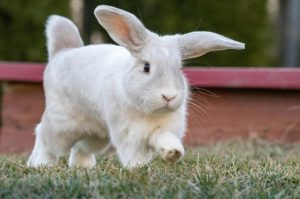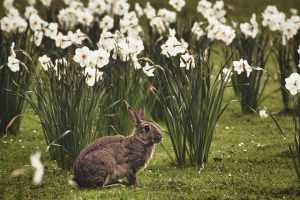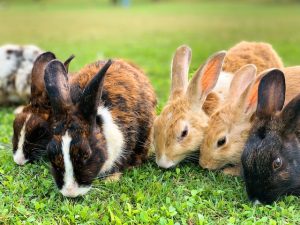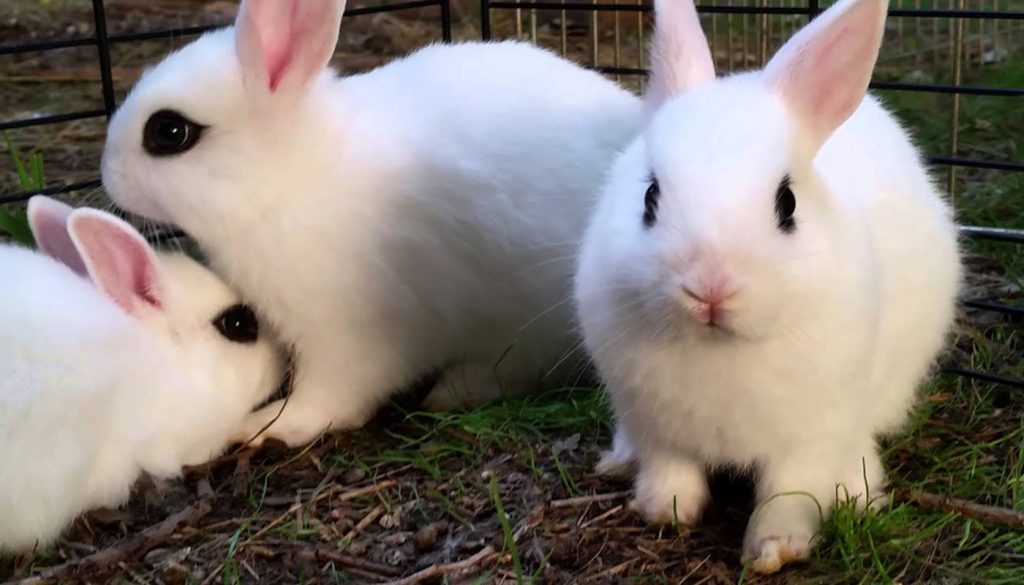
Adding a new family member is always one of the loveliest and most joyous moments anyone can ever experience! Whether you live alone, with a partner, or with your beloved family, the New Zealand Rabbit may very well just fit right in.
Before you choose, it is always a wise move to do your due diligence to prepare you for the changes to adjust to ahead. This is why this article will be entailing all the need-to-know’s before bringing home your very own jumping fluffy companion. This includes their origins, traits, health, lifespan, care, and how to train them. So, whenever you’re ready, let’s hop right to it!
Contents
Origins and Brief History
Though the name might be pointing out the obvious, their origins suggest otherwise. New Zealand Rabbits are not actually from New Zealand. In fact, they are the first (ever) developed breed from America. Back in the 1900s, American breeders would cross popular rabbit breeds from the “old country,” these included breeds such as Belgian Hares and Flemish Giants, to name a few.
As a result, these crossed breeds created various New Zealand Rabbit breeds, such as the New Zealand Reds, New Zealand White Rabbit, Black New Zealand, Broken New Zealand Rabbits, and the New Zealand Blue Rabbit throughout the years. Though they may vary in looks and genes, they are collectively known as New Zealand Rabbits.
Physical Traits
Just by the looks, New Zealand Rabbits are large and muscular in size, as the breed was mainly crossed for meat production back in the old days. These bunnies have a well-rounded and commercial body with lean muscles. When it comes to their weight, there is a slight difference between female and male New Zealand Rabbits. The does (or female New Zealand Rabbits) can weigh 10 to 12 pounds, while males only weigh 9 to 11 pounds.
New Zealand Rabbits have a moderately rounded head that complements their body proportions. They also have thick, furry, round-tipped, and erect ears with gorgeous pink eyes that might just enchant anyone that gazes at them.
One of New Zealand Rabbits’ most notable features is their snow-white, short, and cotton-soft fur coat. With that being said, these bunnies’ coats don’t require much grooming as rabbits are naturally hygienic animals. However, that doesn’t mean you should throw grooming out of the window entirely. Grooming them from time to time is the way to go to get rid of the loose hair lying around your home and keep your beloved bunnies from eating their own hair (which may be health-compromising if they continue to do so).
The New Zealand Rabbits have a variety of colors. Some popular and established ones include red, black, white, blue, and broken (a mix of any color with white). Each of these colors belongs to a different breed variety. If you would like a particular color, talk to a reputable breeder to find out what they have in store for you.
Behavioral Traits
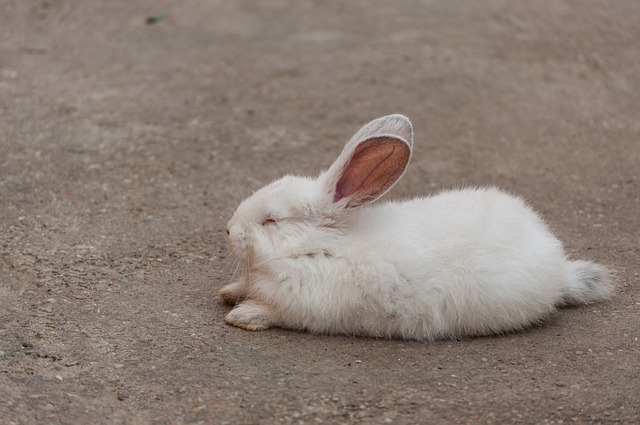
Despite their large size, New Zealand Rabbits are known to be outgoing and gentle pets. Some suggest that they are called the “Golden Retrievers” in rabbits for their similar temperament. This also means they can get along with others, including children and other pets, so long as they get introduced at a young age.
These furry rabbits are naturally friendly and calm. They are not known to bite, kick, or be aggressive, making them great pets, especially for first-time pet owners and families. They are also easy-going and don’t mind being held, petted, or picked up, making them perfect couch buddies on a cold rainy day.
Even though they are not known to be biters, giving the chew toys is always a great idea to keep them entertained and keep their tiny teeth nice and short. These toys can be as simple as emptied-out kitchen paper towels or rabbit toys from the local pet store.
Trainability
As the adorable fluff, these bunnies are (and always will be); training them may not come as easy as you think. As owners, we strive to ensure our indoor pets are potty-trained to keep our homes clean and maintain proper hygiene for our beloved pet rabbits.
These rabbits may take some time to understand the dos and don’ts, which may mean you have to be extra patient picking up their little droppings from time to time. A helpful strategy many rabbit owners do is to place a handful of litter boxes on specific corners where their bunnies usually take a loo.
Doing so helps your rabbits to learn and understand where and how to properly take their version of toilet breaks. As long as you have braced yourself with an ocean of patience and some treats, you should be able to get them fully potty-trained in a few months or less!
Health
Another great reason to have a pet New Zealand Rabbit is that they are not prone to particular diseases or health issues. Still, some potential factors may need some paying attention to.
Overgrown teeth are a typical issue for pet rabbits and are usually caused by their diet. A great way to avoid this is by weekly checking inside their mouths and ensuring you give them a high hay diet as it keeps the teeth at a manageable length. If left unattended, these teeth may grow into their face and jaw, which may cause them excruciating pain (which we most definitely want to avoid).
The de-worming paste is essential regardless of whether you have an indoor or outdoor pet rabbit. Ensure you give this twice a year in pea-sized portions, and they are good to go. You should also regularly check your bunny’s ears to look out for and prevent ear mites from developing.
A condition called Flystrike is also one to look out for, especially if you have an outdoor rabbit. Flystrike occurs around the rabbit’s bottom where flies lay their eggs, and once it hatches, they will feed off from your rabbit’s insides and may cause severe pain. This is indicated by symptoms such as digging into a corner, avoiding eating or drinking, not wanting to move, and being lethargic and quiet. If you think your rabbit has any of the following symptoms, immediately seek medical assistance from your local vet to get, them to prompt treatment.
Lifespan
Your typical furry New Zealand Rabbit has an average lifespan between 5 and 6 years, considering the fact that they will be reproducing at a certain age. However, you can prolong their life expectancy up to 10 years (this is as far as they can go) by neutering and spaying. Should you choose to proceed with this procedure, please consult with your local vet to ensure your beloved pet bunny can have its lifespan safely and successfully extended.
Spaying and neutering can be done by professional vets as they surgically disable New Zealand Rabbits from reproducing. However, please be mindful that this is all comes down to personal choices, this is not a must, but it is the only way to naturally extend their lifespan.
Care and maintenance

Enclosure
To let your furry companion eat, move freely, and snuggle to sleep, they should have enough living space to do all that without feeling squeezed. As New Zealand Rabbits are relatively large in size, this demands a pretty spacious enclosure of around 30 by 36 inches as a good rule of thumb.
Enclosures should comprise sturdy wire and have either a plastic or metal bottom that is big enough to enable them to do a morning stretch or two. Cage bottoms should be covered with rabbit-friendly and comfy bedding that are regularly cleaned and changed at least once a week. Beddings typically come in the form of hay, wood pellets, and sawdust, as common choices most rabbit owners opt for.
Outdoor Playtime
Getting your bunny to safely roam out and about is essential to keep them active and healthy. To ensure they can do so out of harm’s way, ensure you’ve rabbit-proofed their playing grounds. This includes removing any potentially toxic items such as house plants and stowing away electric wires or cables. No matter how safe their playing grounds can be, supervising them is necessary to ensure they stay safe.
Diet
Like most rabbits, New Zealand Rabbits require high-quality hay as the major part of their diet plan. This can then be complemented by a balance of fruits, veggies, and pellets for their nutrition’s sake. Apples and romaine lettuce are great examples of what kind of fruits and greens you should feed your bunnies. You must pay attention to what kind of veggies and fruits you feed them, as some may cause health issues such as digestive upsets. If you’re unsure, consult your local vet to know which fruits and vegetables are rabbit-friendly.
To wrap it up
As you can tell, New Zealand Rabbits can indeed make a great pet and are relatively manageable regardless of whether you have had pets before or not. The outgoing, friendly, and gentle nature of these large furballs make them the perfect companion and playmate for your children and other pets, as long as you introduce them to each other early on. These rabbits are relatively large, so having a spacious living area coupled with proper hygiene, exercise, and diet is the key to helping them grow and live happily in good health.



